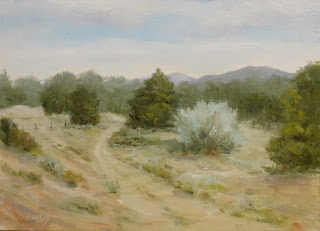This morning, sitting in the car waiting for my husband, I
was looking at the trees surrounding the small parking lot, thinking how I
would paint them and what colors I would use. This brought to mind my early
days of teaching art class and the problems we all had with painting trees.
I believe that the only way to paint a realistic tree is by
direct observation and sketching the trees you see around you. I suggested to
my students that it would be very helpful if they would take a few minutes a
week to study the trees around their home, making sketches and noting the
colors of the bark and leaves. A few minutes a week would be time well spent.
Some students did as I requested. For others, “can’t find the time” was the reason
given, as they continued to paint stunted trees with brown bark and sap green
leaves.
All of the arts – dance, music, acting, to name a few,
require many years of practice. Missteps, wrong notes, forgotten lines are all
a part of the learning process. You continue to study and work at it until you
improve. Why is painting any different? Direct observation of nature in all her
moods is the best teacher. Painting many small studies gives you an opportunity to improve your skills. The studies that are failures are very
important to your growth, showing the areas that need more attention and continued
practice. Would you take your first few piano lessons and expect to play
Carnage Hall? Therefore, you should accept the fact that not all your paintings
will be successful, but with each failure there is opportunity for growth.
So going back to trees again, over the years I whittled down
my art classes to my most serious students. The students that made the greatest
progress were the students that studied, read books and had an open mind to
learning. They were serious about their art.
Thanks for visiting,
Celene
www.CeleneFarris.com

